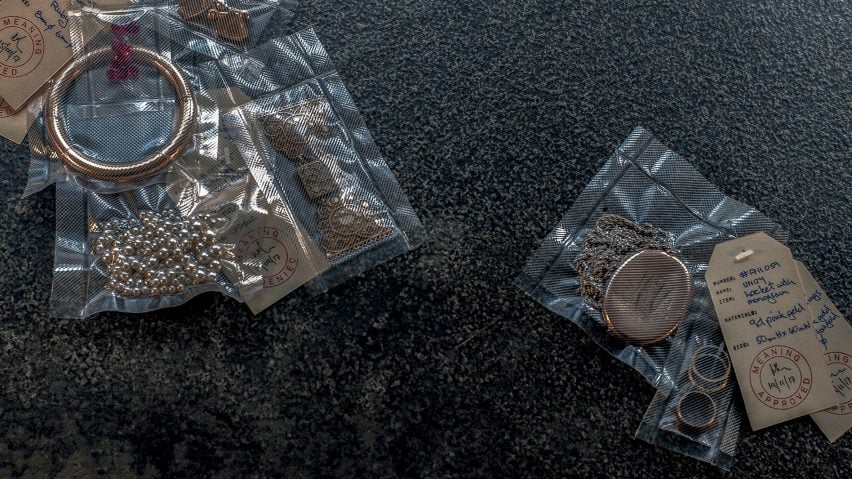Jewellery designer Susan Cohn is working on a project that will explore a new Danish law that allows border authorities to confiscate jewellery from asylum seekers.
Called Meaninglessness, the project responds to the "jewellery law", which permits the state to seize personal possessions to meet the cost of hosting refugees.
Cohn, who lives and works in Melbourne, Australia, said she was "horrified" when she heard about the law, which was introduced in 2016.
Danish police can seize jewellery from asylum seekers
"It is staggering that such a policy could be conceived, let alone passed as law," she said. "This reducing of the value of jewellery to an asset is contemptuous and ignorant of the crucial role jewellery plays in people's lives – especially people fleeing from war and trauma."
Meaninglessness will consist of a performance combining spoken word, video and jewellery to explore the meaning of objects. The inaugural performance will take place in Denmark in July and it will transfer to Melbourne in the autumn.
The Danish law allows police to search asylum seekers arriving in the country and impound valuable items. However, they are not allowed to take items of sentimental value such as engagement or wedding rings.
Refugees can keep "meaningful" items
This means that police have to establish whether or not items are meaningful to their owners before taking them.
"When the law was passed there was an outcry and it was decreed that asylum seekers could keep their wedding rings," Cohn said. "Following further outcry it was decided that asylum seekers could keep their engagement rings, but any 'meaningless' jewellery which had an asset value would be confiscated. Hence the title of my project is 'meaninglessness'."
Images prepared for the project so fair include vintage jewellery placed in plastic bags and labelled "Meaning approved" or "Meaning denied".
Cohn's performance will explore the meaning of jewellery
"The images suggest what type of traditional jewellery may be considered meaningful and meaningless by a government official," Cohn said. She added that she is working on new pieces designed to help asylum seekers get around the laws.
"I am looking at how meaningful jewellery could be converted to look meaningless, but keep its meaning," she said.
Cohn said the law showed that policies towards asylum seekers in western countries are "becoming more cruel, not less".
"I will tackle this project in two ways," she said. "First, through the performance, I wish to open up a conversation with my Danish counterparts using the meaning of jewellery as a departure point to question the situation and how we can change it by altering the way we act, behave and value."
Jewellery that will "welcome people to a community"
"Second, through my making practice as a jeweller, I will explore a new body of work that offers a way to welcome people to a community and tell them that they have a place in this world."
Cohn, one of the leading lights of Australia's design scene, has been designed jewellery since the eighties and in 1990 became the first woman to design products for Italian brand Alessi.
She said the Danish law resonated with many Australians due to their own country's harsh treatment of refugees.
"My work has always been my way of commenting on the things that deeply concern me," she said. "The Australian asylum seeker policies deeply troubles me. I am a jeweller and I constantly try to find ways my work can offer some humanity. Jewellery is a language which can reach out to people and say 'I see you'."
The inaugural performance will take place at Bækkelund International Residency Center for Artists on Bornholm island this July, while the accompanying exhibition will be held at Grønbechs Gaard arts centre. Further performances will take place over the summer at various locations in Denmark with the Australian premiere taking place at Anna Schwartz Gallery in Melbourne in October 2018.

